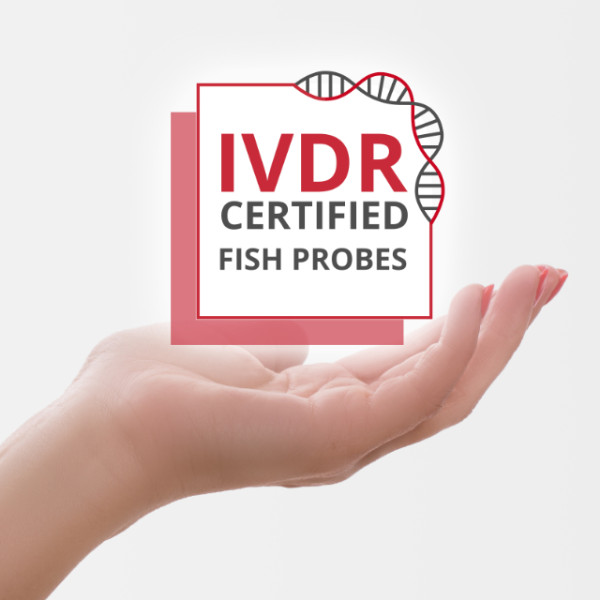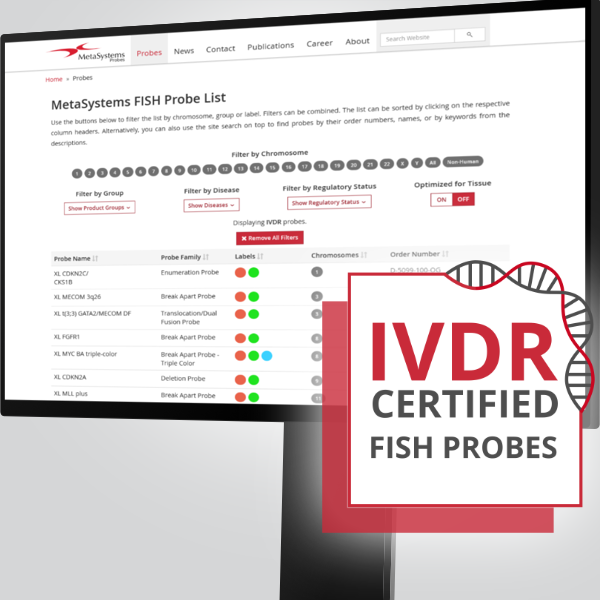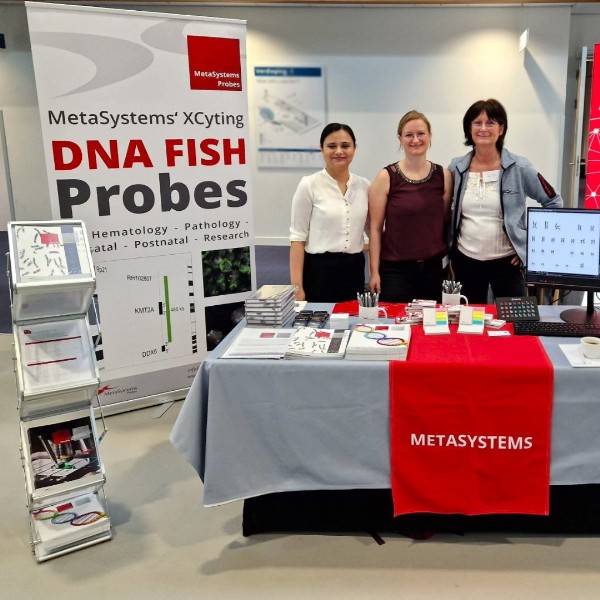Myelodysplastic syndromes and myeloproliferative disorders are associated with deregulated production of myeloid cells. According to WHO classification (2008), cytogenetic aberrations are observed in about 50% of MDS cases. The most common aberrations are 5q-, 7/7q-, trisomy 8, del(20q), and inv(3) or t(3;3).
Chromosomal translocations involving the EVI1 locus are a recurrent finding in myeloid leukemia and are associated with poor prognosis. Two common recurrent rearrangements affect the 3q26 locus. One is the inv(3)(q21q26) and the translocation t(3;3)(q21;q26), in which EVI1 overexpression is caused by juxtaposition of the EVI1 gene to enhancer elements of the Ribophorin gene at 3q21. EVI1 activation is also observed in the translocations t(3;12)(q26;p13) and t(3;21)(q26;q22) and is due to generation of the fusion genes ETV6/EVI1 and RUNX1/EVI1, respectively.
Clinical Applications
- Acute Myelogenous Leukemia (AML)
- Myelodysplastic Syndrome (MDS)












